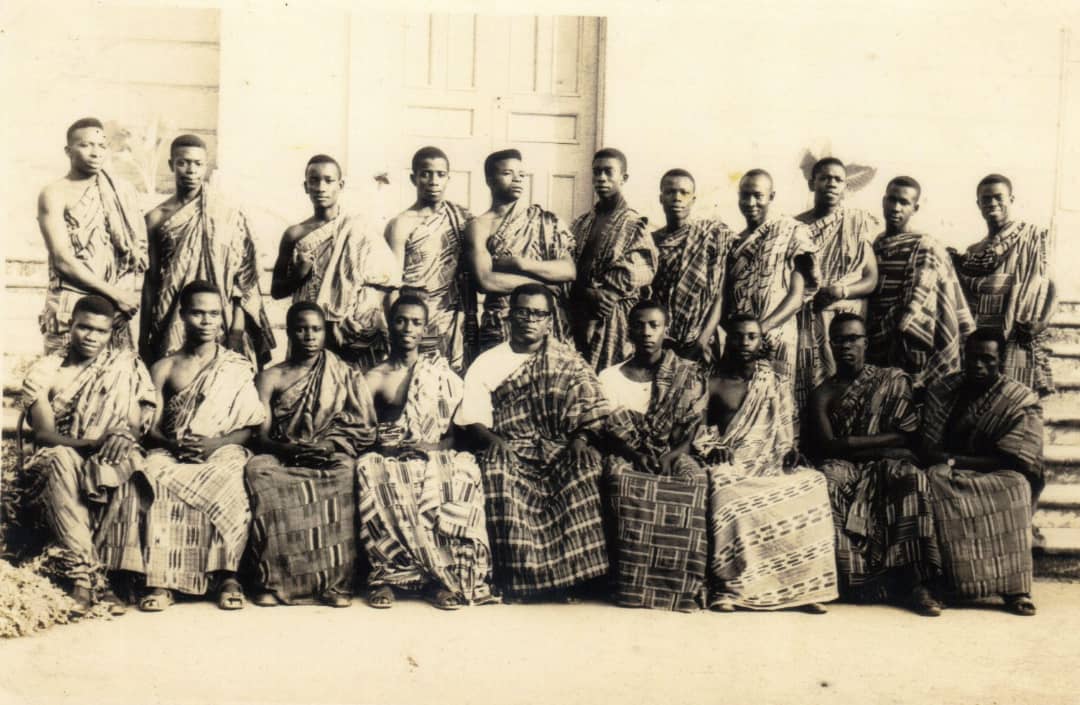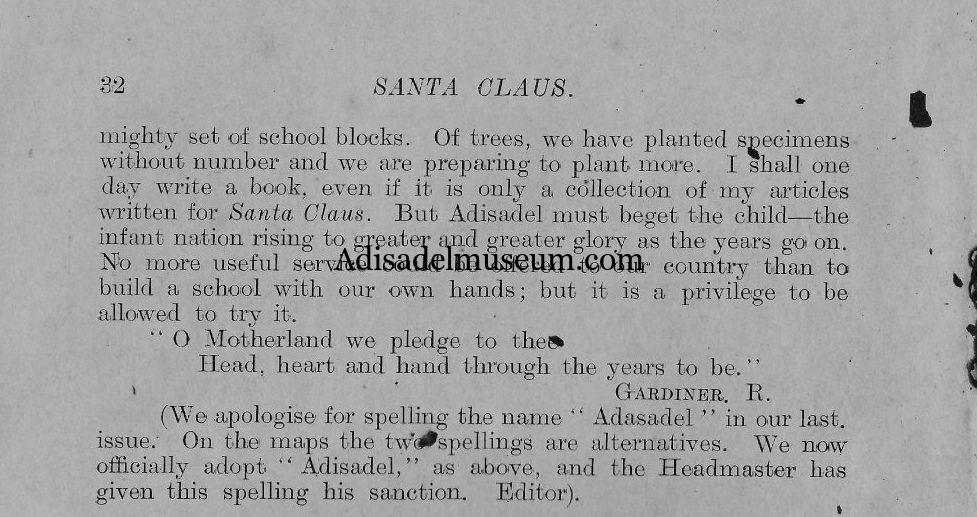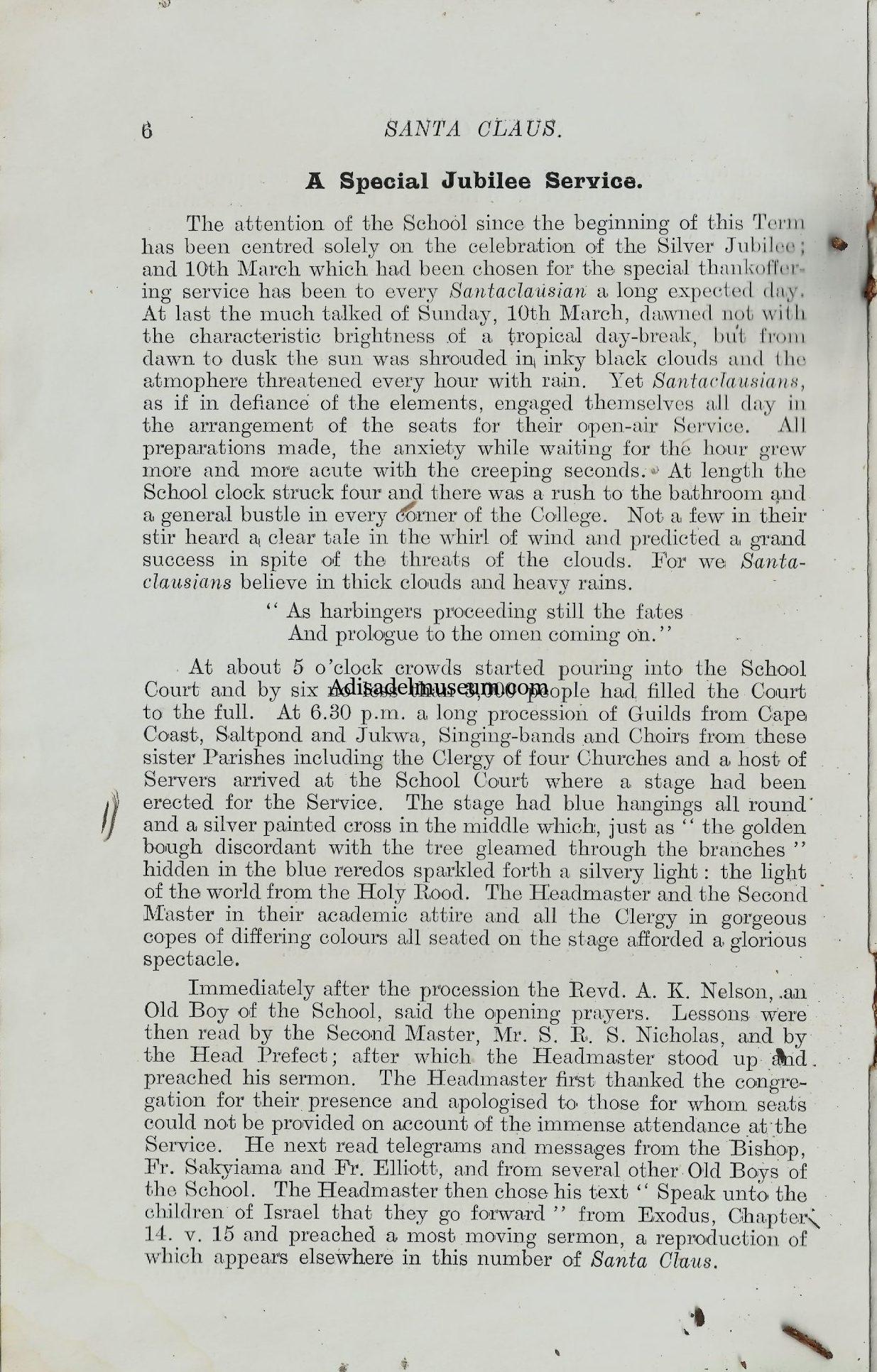Adisadel was established in 1910 in a building at Topp Yard, near Christ Church and Cape Coast Castle. It began with 29 boys, but in 1935 it had about 200.
The school buildings were extended in 1950 by Fry and Drew. At the time of the Golden Jubilee in 1960, enrolment had gone up to 545. When the school celebrated its centenary in 2010 there were over 1500 boys (all boarders) and 93 teachers.
The school’s Founder was the Right Reverend Dr Nathaniel Temple Hamlyn of the Anglican Church. His purpose was to provide a grammar school for sons of Anglican parents, in particular a training ground for Church personnel.
The School is the second-oldest secondary school in Ghana and claims to be one of the most famous institutions of learning in sub-Saharan Africa. The first secondary school to be established in Ghana was Mfantsipim School, also in Cape Coast, which was founded by the Methodist Church in 1876. It currently has 10 houses, the most recent being Thomas Jonah House, built in 1997.
Adisadel College was the first secondary school in the history of Ghana to have its prefects don special cloaks,
red for the head prefects, blue for the other prefects and green for the assistants.
First account – as outlined in http://self.gutenberg.org/articles/Adisadel_College
Motto
The school’s motto is
“Vel Primus Vel Cum Primis”
which in Latin means “either the first or with the first.” It enjoins Santaclausians to strive to be among the best, if not the very best, in whatever they do. Adisadel College is currently one of the few secondary/high schools in Ghana still called a ‘college’. Santaclausians actually pride themselves as being the only real college in the country.
Colours
The school’s colours are black and white displayed as stripes.
Origin of the Name Adisadel
Over the years attempts have been made to explain the meaning and the origin of the name Adisadel. In George McLean Amissah`s 1980 ground-breaking work: Reminiscences of Adisadel – A short historical sketch of ADISADEL COLLEGE, he proffers two legends as theories underpinning the name Adisadel which has gained traction over the years. In the first theory, Amissah (1980) speculates that the name Adisadel is a vulgarisation or Anglicisation of the Mfantse expression Alice ada ‘Alice is asleep’, which emanated from a response patients get from a caretaker of a nurse called Alice who lived in the area in the 1900`s and was noted for her afternoon siesta. In his second theory based on another hearsay, Amissah (1980) speculated further that the name Adisadel emerged in the 1930`s from the rallying cry of the students-turned-labourers who uttered Adisifo, mu mfa mu Adere “Workers, take up your cutlasses”, as an encouragement to themselves for participating in the construction of the current school buildings above the hill after classes and at weekends. Amissah (1980) claims that Adisifo, mu mfa mu Adere transmogrified into a hypocoristic name phrase Adisifo Adere and finally to Adisadel.
Incontrovertible evidence from an archival source, the 1933 version of the Santa Claus Terminal Magazine, Vol. 2, however, disproves Amissah`s mainstream narrative on the meaning of the name Adisadel. In the volume, the celebrated economist cum global diplomat, Dr. Robert Kweku Atta Gardiner, the then Assistant Head Prefect who was close to history as a continuing student, posited that the name Adisadel is simply the vulgarisation of a personal name, Alice Adele, which means ‘The Exalted Noble’. The name Alice means ‘Exalted’, ‘Exalted One’ or ‘Person of Noble Rank’, and Adele is a Germanic-Dutch name which means ‘Noble’ or ‘Nobility’, thus Adisadel by extension is a derivative of ‘The Exalted Nobleman’ or ‘The Exalted Man of Nobility’.
Gardiner (1933) explained on page 31, thus:
The building now occupied by Quaque House was formerly known as “Belvedere House” and was the residence of Mr. Thomas Hutton, a wealthy Cape Coast merchant. Mr Hutton`s business premises is what is now the Public Works Department but he actually lived in Belvedere House. This man built a lodge on flat part of the ground which is now our site for the new school buildings, and named it after his wife whose Christian names were Alice Adele. The building was of burnt brick; and up to about 30 years ago its ruins were clearly visible to passers-by on the Jukwaa Road.
The Present name, “Adisadel” is but a corruption of Alice Adele. The School had the two options of Adasadel and Adisadel. In fact, the editor of the Santa Claus had used the first option of Adasadel before the publishing of Gardiner`s write up which settled on Adisadel stating that the school had officially settled on Adisadel as the legal binding name for the school. The editor corrected, thus:
(We apologise for spelling the name “Adasadel” in our last issue. On the maps the two spellings are alternatives. We now officially adopt “Adisadel,” as above, and the Headmaster has given this spelling his sanction…Editor).
In view of this evidentiary material, we the members of the 1996 Year Group move for all Adisadel School online platforms and future school programmes to adopt Robert Gardiner`s authentic rendition of the history and origin of the name Adisadel as a contraction of Alice Adele, which means ‘The Exalted Noble’, ‘The Exalted Nobleman” or “The Exalted Man of Nobility”.









